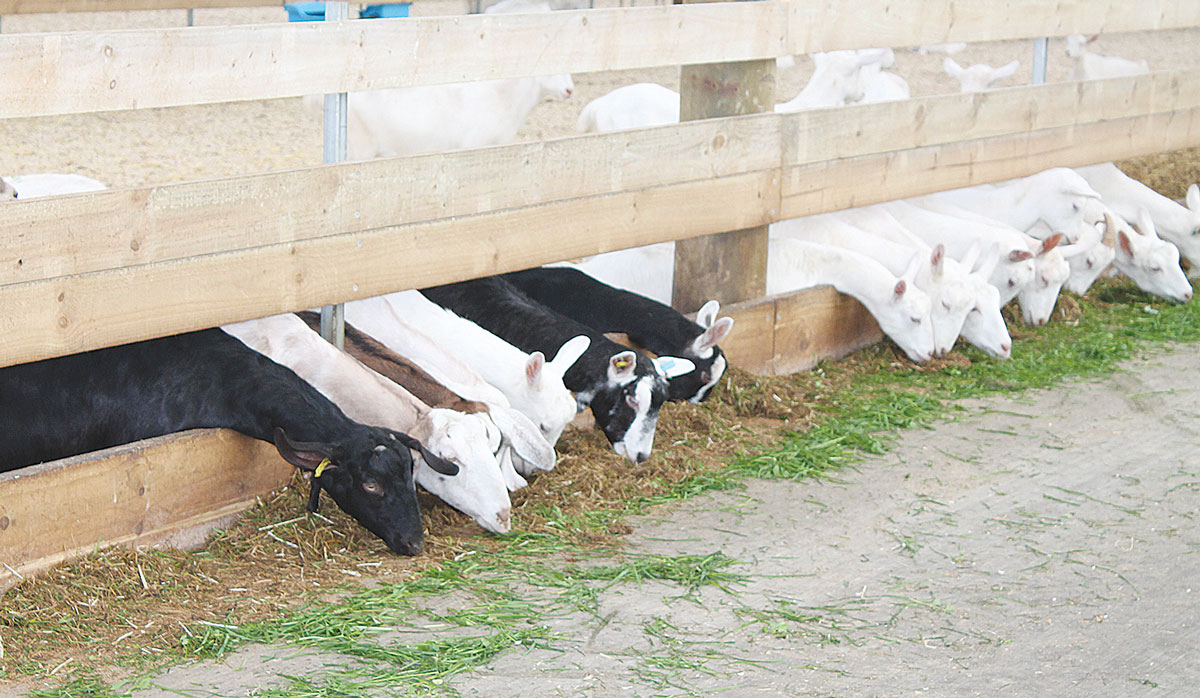Mineral Balance: The hidden key to dairy goat health & production
Most dairy goat farmers focus on getting energy, protein, and fibre right, and fair enough – feed drives milk.
Part of your preventative healthcare needs to focus on the safety of the physical environment, according to a dairy goat farming website.
“Goats are naturally curious so the barns and pens need to be ‘goat proofed’ just in the same way as you might childproof your home for young children. This is particularly important for any pens housing young goats,” says Dairy Goat Farming NZ.
According to the website (dairygoatfarmingnz.com), ways to goat-proof space include:
Hoof care is also important.
The website says hooves of indoor dairy goats require ongoing management in order to prevent painful issues.
“Damp bedding material (which encourages bacterial growth) and over feeding maize concentrate (increases the hoof growth rate) are the two main causes of foot issues.
Keeping on top of your barn maintenance and regular trimming of hooves will keep most issues under control.
“Bringing in external hoof trimming contractors three to four times per year will get the whole herd done within a day or two and additional hoof trimming can be done on farm in-between as required. The annual cost per animal is approximately $10-15 per doe depending on how many times they are trimmed. Where preventative measures aren’t enough, antibiotic and pain relief treatments may be needed.”
Being aware of the potential spread of disease from one farm to another, and putting measures in place to control this is an important but easily overlooked preventative health strategy.
Johnes Disease
Johnes is a terminal disease which causes the goat to simply waste away. The first indicator will usually be a drop in milk production but at this point it may not be recognised as Johnes. Following this the goat will lose weight regardless of the diet offered and in the late stages of the disease will typically have diarrhoea.
As there is no treatment available for these does, this disease costs farmers in terms of milk yield loss as well as the terminal loss of good animals from the herd, particularly as there seems to be a higher incident of Johnes in higher producing does.
The bacteria causing this disease is spread through infected faeces, and from mother to baby during the birthing process.
Young kids can also be exposed to the bacteria in the bedding in the post-birth period.
Good barn management, selecting replacement kids from healthy dams and proactively culling goats suspected to have this disease are required in order to reduce transmission rates within herd. The bacteria also survives for a long time in the soil and recontamination can occur if goats are fed pasture that has had contaminated effluent spread on it.
A vaccination programme for the kids which includes the Gudair vaccine can assist in the reduction of Johnes in the herd. Whilst the vaccine does not provide 100% protection against Johnes in goats, it proves a useful tool in slowing the transmission of the disease in the herd.
It is worth noting here that CLA (Cheesy Gland) can also cause wasting in goats – testing and consultation with a vet to determine the exact nature of the issues observed is needed to ensure correct diagnosis.
Intestinal Worms
 |
|---|
|
The best way to reduce worm burden is to limit as much of the larvae as possible from entering the goat's digestive systems. |
Goats have less ‘built-in’ natural immunity to worms than other species such as cows and sheep as their natural diet and browsing habits see them less exposed to worm larvae.
Under intensive pasture-based systems like we have in New Zealand, the best way to reduce worm burden is to limit as much of the larvae as possible from entering the goat’s digestive systems. This is what underpins the cut-andcarry system of feeding goats that is prevalent in commercial NZ goat farming operations.
By cutting the pasture at least 2cm higher than the base, most of the worm larvae is left in the paddock and by feeding the pasture down a centre lane or on a conveyor, the goats are not mucking back on the feed they are eating.
Barber pole worm seems to be the most common type of worm affecting dairy goats. Goats with worm burden will usually look rough coated, losing weight, and have bad diarrhoea. They may also be anaemic (pale around the eyes and mucous membranes).
According to the latest Federated Farmers banking survey, farmers are more satisfied with their bank and less under pressure, however, the sector is well short of confidence levels seen last decade.
Farmer confidence has taken a slight dip according to the final Rabobank rural confidence survey for the year.
Former Agriculture Minister and Otaki farmer Nathan Guy has been appointed New Zealand’s Special Agricultural Trade Envoy (SATE).
Alliance Group has commissioned a new heat pump system at its Mataura processing plant in Southland.
Fonterra has slashed another 50c off its milk price forecast as global milk flows shows no sign of easing.
Meat processors are hopeful that the additional 15% tariff on lamb exports to the US will also come off.
President Donald Trump’s decision to impose tariffs on imports into the US is doing good things for global trade, according…
Seen a giant cheese roll rolling along Southland’s roads?